The ultimate guide to vegan pancakes! Get all of my best tips for how to make the best dairy & egg-free pancakes that still taste amazing.

💌 SAVE THIS RECIPE!
Watch out for more tasty treats coming your way too! Unsubscribe at any time.
Everyone deserves perfect vegan pancakes and I am here with my tips and tricks for getting it right every single time.
In this post: Everything you need to make amazing vegan pancakes.
Use this menu to jump to the section you are interested in:
- Best pancake making equipment
- How to make vegan pancakes without eggs and milk
- How to make vegan pancakes fluffy
- How to measure flour correctly
- Why it's important not to over mix the batter
- When to flip pancakes
- How to avoid gummy vegan pancakes
- What fat to use when cooking pancakes
- How to keep pancakes warm
- What to serve with pancakes
- Tips for storing leftovers
- Vegan pancake recipes
If you've ever wondered if it's possible to make vegan pancakes and want to learn how to make them without eggs and milk, or you have had an epic vegan pancake fail, then this is the guide for you. I'll be giving you all of my tips and tricks for the best vegan pancakes as well as the common reasons they can go wrong and how to avoid it happening to you.
I take my vegan pancake game very seriously and have my technique perfected, as you will know if you have ever made any of my pancake recipes. I'll be sharing some of my best recipes for vegan pancakes at the end of this post.
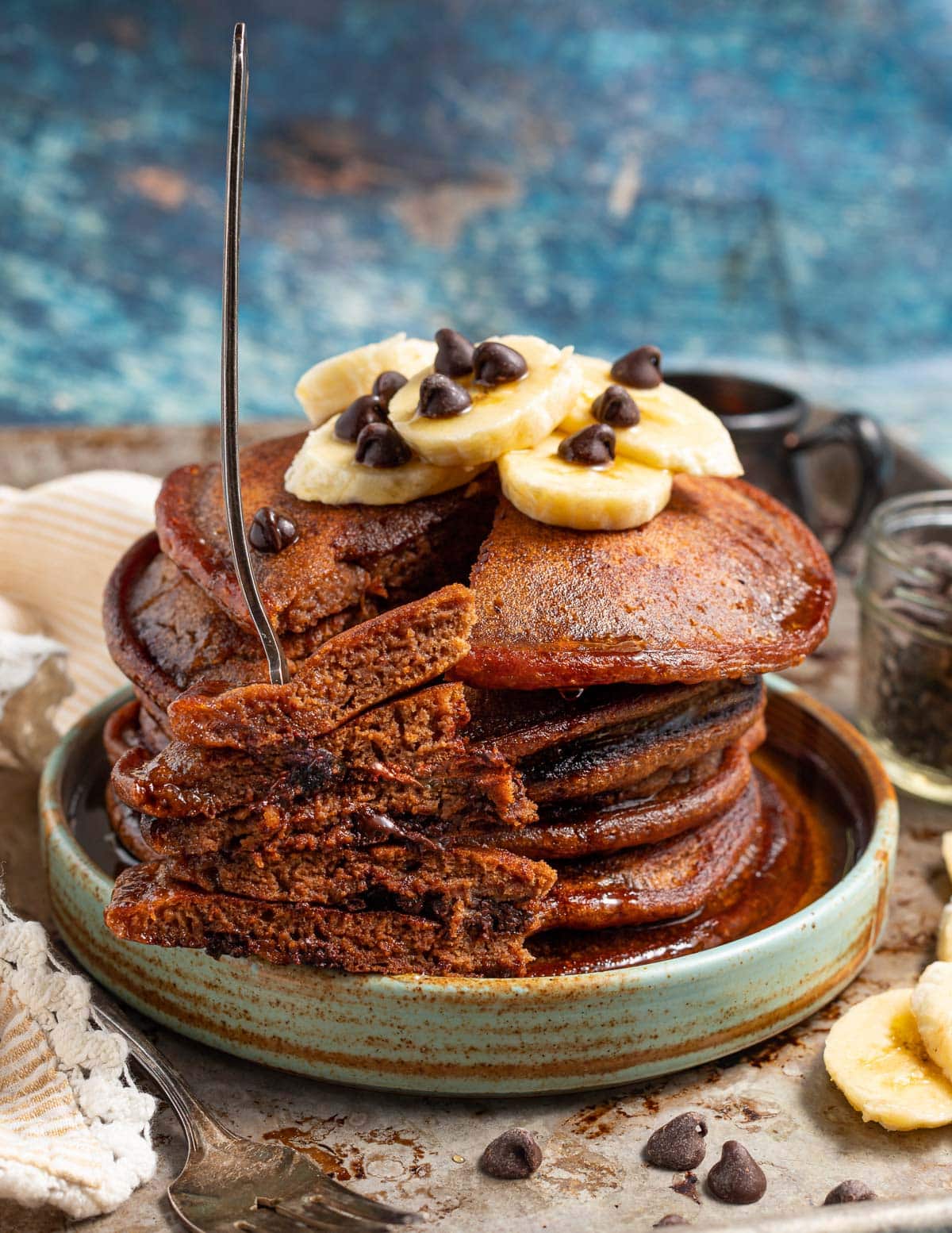
Best Pancake Making Equipment
Set yourself up for success by using the correct equipment and a good recipe. My must have pancake making items are:
- A good heavy non-stick pan (or griddle) that is big enough for you to be able to get in there with a spatula and flip the pancakes comfortably. If your pan isn't the greatest, chances are your pancakes won't be either. Buying a good frying pan or skillet is an investment. I personally love the results that cast iron gives when cooking pancakes and I use a seasoned cast iron griddle for making mine.
- Two mixing bowls. One large and one smaller one. One for mixing the dry ingredients and one for mixing the wet ingredients. You'll learn why doing this is crucial later.
- A digital kitchen scale to weigh the flour.
- Measuring spoons for measuring out the baking powder, salt, vinegar etc accurately. Just using regular old spoons from your cutlery drawer is not an accurate way to do it. They are not designed to be used as measuring spoons.
- A spatula for flipping the pancakes and removing them from the pan.
- A balloon whisk or a spoon for mixing the ingredients.
- Something to scoop the pancake batter out of the bowl and into the pan. A ladle or a ⅓ or ½ cup measuring cup works, depending on how large you want your pancakes.
How To Make Vegan Pancakes Without Eggs & Milk
It is really easy to make pancakes without eggs or milk. The milk is the easiest component to replace. Simply use your favourite dairy-free milk instead of regular milk. Any homemade or store-bought non-dairy milk will do such as almond milk, soy milk, cashew milk, or oat milk.
It's really important to remember that eggs in pancakes don't just bind. They also provide leavening. That's why when you replace the eggs in a traditional pancake or cake recipe with many of the vegan substitutes, you won't get such good results. When replacing eggs you also need to make up for the leavening they provide and most vegan egg replacers such as ground flaxseed, chia seeds, applesauce etc don't do that.
My favourite way to make egg-free pancakes and by far the most effective method, is to either just use some extra baking powder or use a combination of extra baking powder with a bit of baking soda and an acid like apple cider vinegar or lemon juice.
Getting the measurements of each of these right is incredibly important so I recommend you follow an already vegan recipe with good ratings, rather than trying to convert and wing it with a non-vegan recipe.
How To Make Your Vegan Pancakes Extra Fluffy
Vegan pancakes can be just as fluffy as non-vegan pancakes. Just look how thick and fluffy these are:
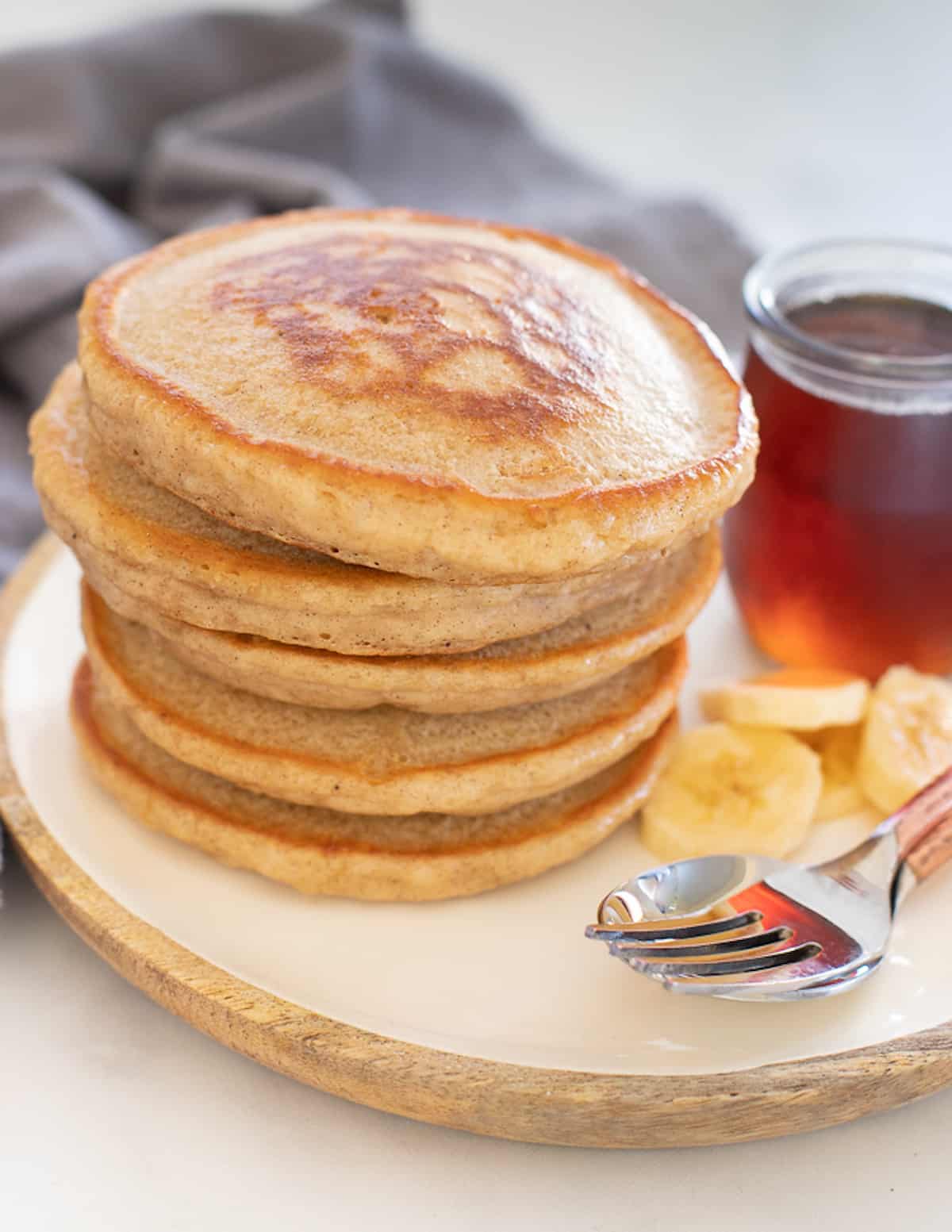
It's no wonder these are my most popular pancake recipe. Here are my tips for getting the best and fluffiest vegan pancakes:
- Use plenty of baking powder. You might look at vegan pancake recipes and think they are calling for a lot of baking powder, and you're right, a lot is used compared to recipes that use eggs. This extra leavening is necessary for fluffy vegan pancakes.
- Measure the flour correctly.
- Make sure your baking powder and baking soda is fresh. It shouldn't be older than 6 months old as it will begin to lose its power after that time.
- In some recipes some baking soda and vinegar (or another acid like lemon juice or cocoa) are necessary. The acid reacts with the baking soda and creates a chemical reaction. They fizz together and create lots of bubbles. These bubbles aerate your pancake batter, making it fluffy. Don't substitute baking powder for baking soda or vice versa. It's important to use whichever one the recipe calls for.
- Thicker batter produces thicker, fluffier pancakes so don't add extra milk.
- Don't overmix the batter. Stir it together gently just until the flour is incorporated and no more. When you overmix you activate the gluten in the flour which can make your pancakes less fluffy and tender.
- Let the pancake batter rest for 5 to 10 minutes before cooking it. This allows the gluten strands to relax and will give you fluffier, more tender pancakes.
- After resting the batter, don't mix or whisk it up again or you will break all of the little air bubbles that have appeared and aerated your batter. Just scoop it up gently out of the bowl and into the pan.
- Cook the pancakes slowly. Ideally no higher than medium-low. With no eggs in the mix, they take longer to set and become fluffy. If you rush them the outsides will be too browned before the insides are fluffy and ready. They take longer to cook but it's so worth it.
- Only flip the pancakes when bubbles have appeared all over the surface and started popping. Not before.
- Treat them gently! Don't push the pancakes down with a spatula when they are cooking or you will squash the developing fluff and ruin the texture.
How To Measure Flour Correctly
One very common mistake people make when making pancakes is not measuring the flour correctly. Using too much or not enough seriously affects how the pancakes turn out.
The number one reason this happens is that they use cups to measure the flour. Cups are not an accurate measure of flour and it is impossible to get good and consistent results when using them. Every single time you fill a cup with flour you will have a different amount/weight in there. Sometimes up to a third more than the recipe intended.
Weighing is the only way to make sure you get the same amount every single time and it's a gamechanger for pancake and baking recipes. Digital kitchen scales can be really inexpensive to buy. You can pick up a decent one for under $20.
If you absolutely have to use measuring cups, do not scoop the flour into the cup. This will give you a wildly inaccurate amount. Instead, aerate the flour with a fork then spoon it gently into the cup without shaking or compacting it down, then level with a knife. This will give you roughly the correct amount.
Why It's Important Not To Over-Mix The Batter
Flour contains gluten and when liquid is added to flour and agitated you activate that gluten. The more you mix the batter the more you develop the gluten. Developed gluten is not your friend if you want super-soft, tender and fluffy pancakes.
Also when mixing too much, you deflate air bubbles in the batter. Stirring gently maintains as much air as possible which as a result will make your pancakes lighter and fluffier.
If you've ever wondered why pancake recipes ask you to mix the dry ingredients in one bowl and the wet ingredients in another its because it helps you avoid activating the gluten too early and over-mixing the batter.
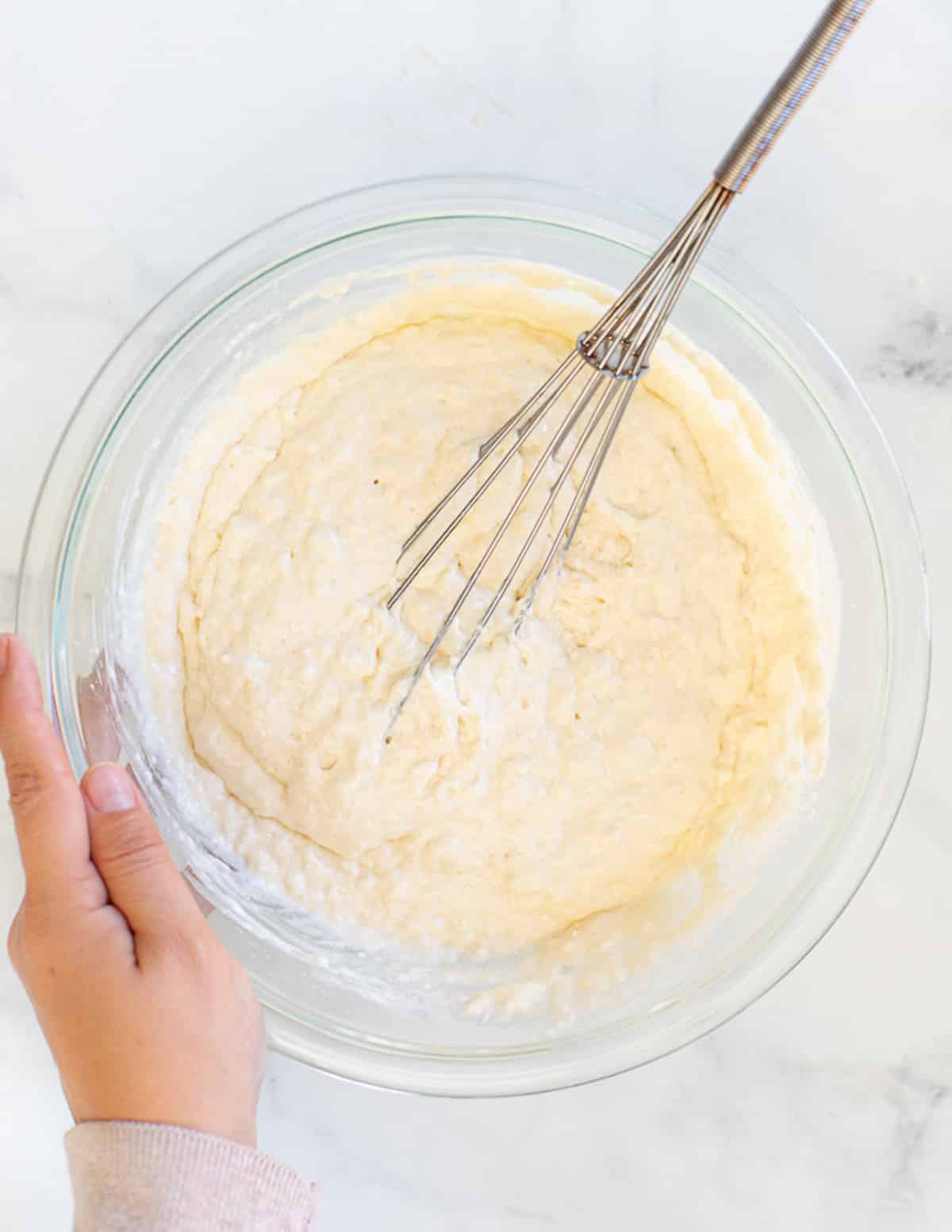
There is a really fine line between mixing just enough and mixing too much. If you do over mix the batter your pancakes will turn out thinner, less fluffy, heavier and a little chewy.
The aim when mixing batter is to combine the ingredients by mixing or folding as gently as you can until your ingredients are just incorporated and there are no dry or floury bits remaining. Stop as soon as you reach that point. Some small lumps are fine. You shouldn't spend time trying to beat them out because then you will be developing the gluten more and more and deflating air bubbles in the batter. I promise you won't notice them when the pancakes are cooked. I try to mix my pancake batter in 10 or fewer strokes.
When To Flip Vegan Pancakes
When making vegan pancakes it is important not to flip them too soon. With no eggs they take a little longer to set and become fluffy. Here are step by step photos of a pancake cooking:

Only flip the pancakes when bubbles have appeared all over the surface and started popping as demonstrated in image number 6. You can see that all of the bubbles around the edges have popped and look like little holes. Doing it this way ensures that most of the bubbles inside the pancake are set enough to not burst when you flip it which in turn ensures you get fluffy, airy pancakes.
How To Avoid Gummy Vegan Pancakes
Over-mixing, not resting the batter, cooking too quickly, not making the pancake batter thick enough and not using a good recipe could all be reasons your vegan pancakes come out gummy.
To avoid it happening again follow all of the tips in this post and give one of my vegan pancake recipes a try.
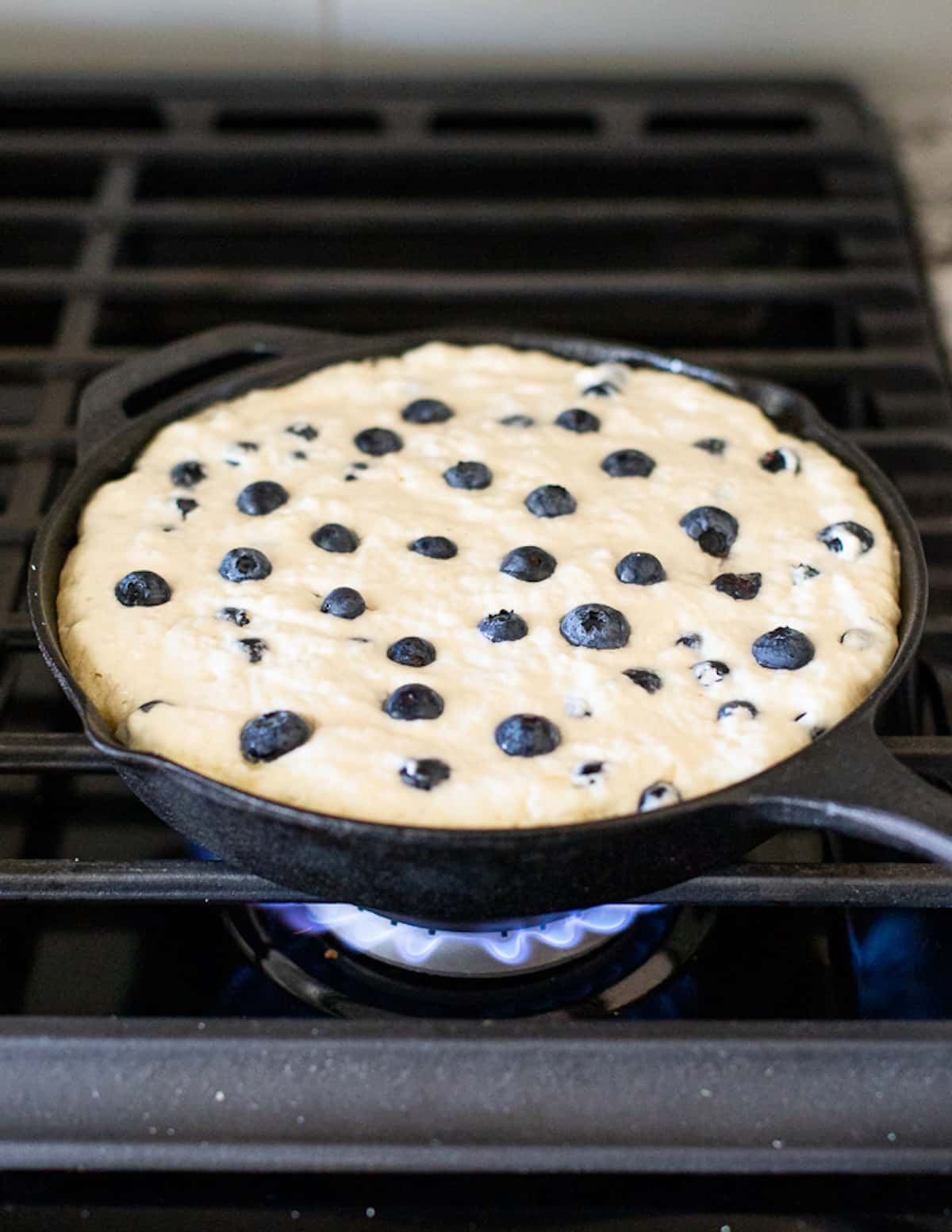
What Fat To Use For Cooking Vegan Pancakes
If you have a great pan that you look after well you don't need much grease at all when cooking your pancakes. If your nonstick surface is really good you can often get away with using none at all.
Any mildly flavoured liquid oil like avocado oil, canola oil, vegetable oil, mild olive oil or sunflower oil, is fine to cook your pancakes in. Even coconut oil if you don't mind some coconut flavour. For the very best flavour and really golden pancakes with slightly crispy-edges, melted vegan butter is key.
Use a heatproof pastry or silicone brush to swish the oil or butter around the pan, or carefully use a thickly folded up piece of kitchen paper to wipe around the pan, but be careful not to burn your fingers.
How To Keep Pancakes Warm
If you don't want your pancakes to go cold while you're finishing up cooking the entire batch, simply turn your oven on to its lowest setting and put a plate or baking sheet on one of the oven shelves. As you cook the pancakes, slide them from the pan onto the plate with a spatula and they will stay nicely warmed until you've finished up the cooking.
What To Serve With Vegan Pancakes
My favourite way to eat vegan pancakes is with a generous amount of vegan butter and lots of real maple syrup. Other favourite pancake accompaniments include:
- vegan lemon curd or jam
- nut or seed butters like almond butter, peanut butter, or tahini
- blueberry lavender sauce or fruit compote
- fruit like fresh berries or sliced banana
- vegan yogurt, whipped vegan cream, or vegan ricotta
- lemon juice and sugar (if you're making vegan English pancakes)
- savoury sides like vegan bacon, vegan scrambled eggs, tempeh strips, vegan sausages, grilled tomatoes, hash browns, or breakfast potatoes
- vegan chocolate syrup or date caramel
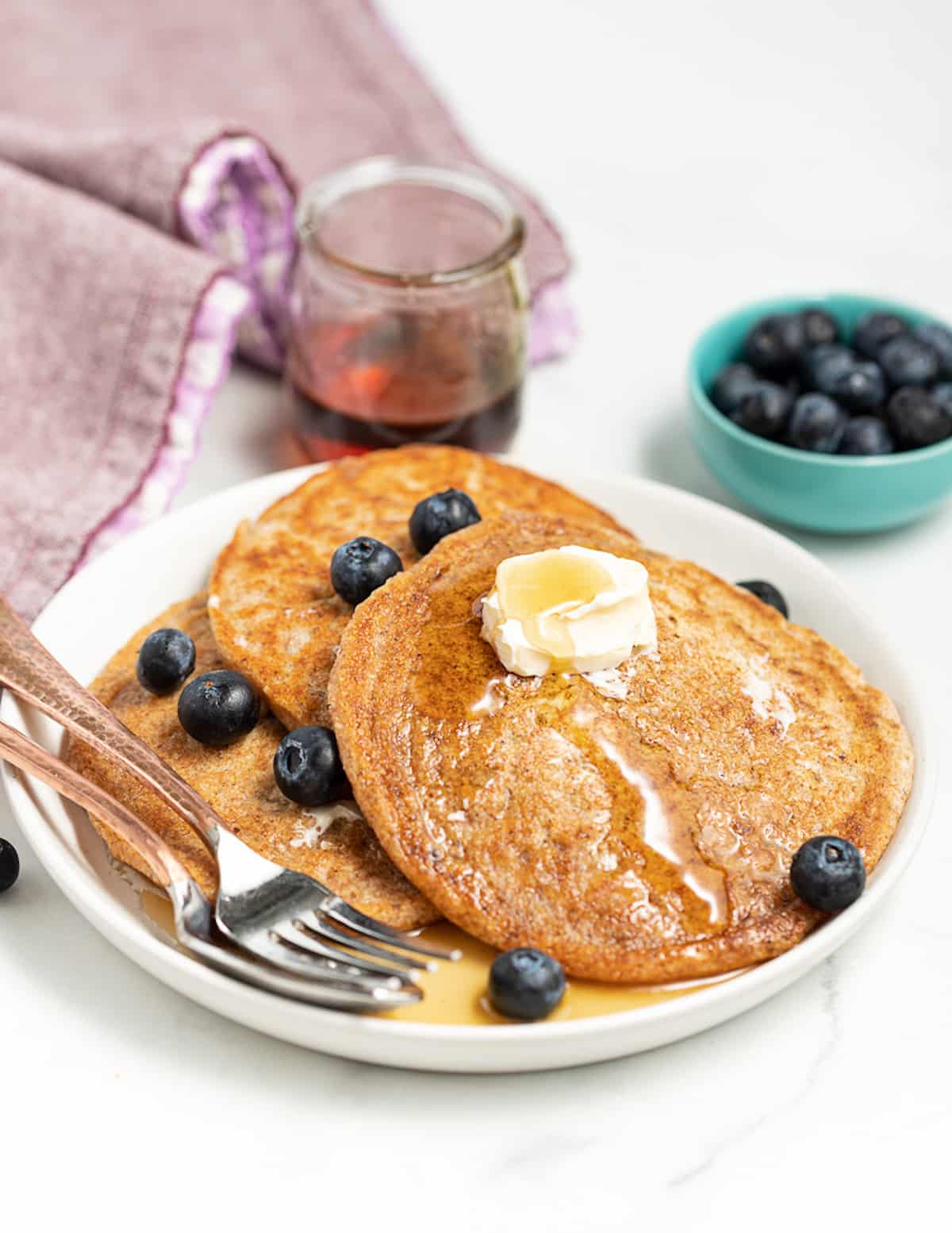
Tips For Storing Leftover Pancakes
If you have leftover pancakes you can wrap them well and keep them in the fridge for a couple of days or freeze them for up to 3 months. Reheat straight from the freezer.
To reheat pancakes you can pop them into a skillet or frying pan over medium-low heat until they are heated through. You can also microwave them for about 30 seconds (a bit longer if they were frozen) or pop them into a toaster for 1 or 2 cycles.
Vegan Pancake Recipes
So now you've read all of my tips it's time to put what you've learned into action with my best vegan pancake recipes:
Chocolate Banana Pancakes
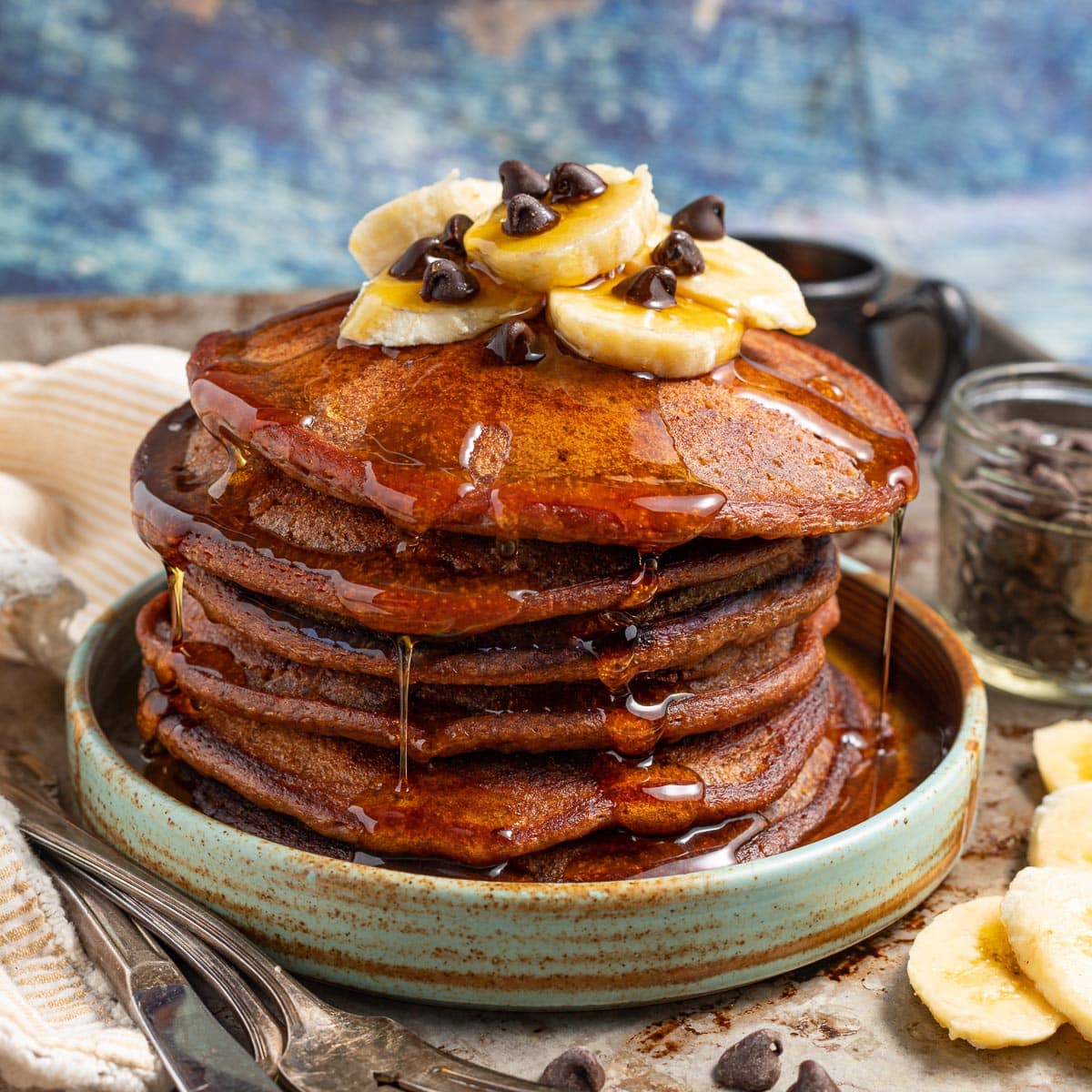
Vegan Spelt Pancakes
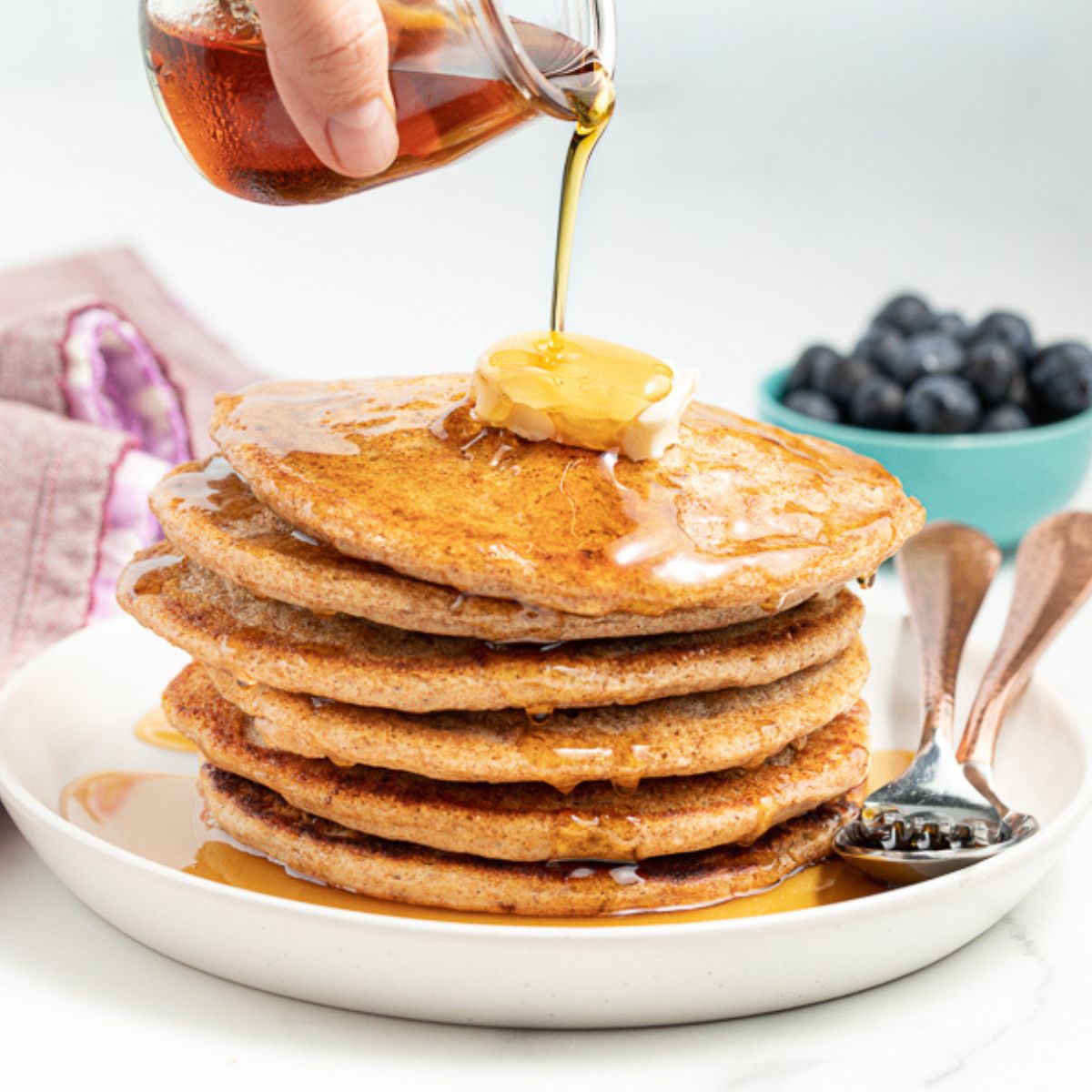
Pancake in a Mug
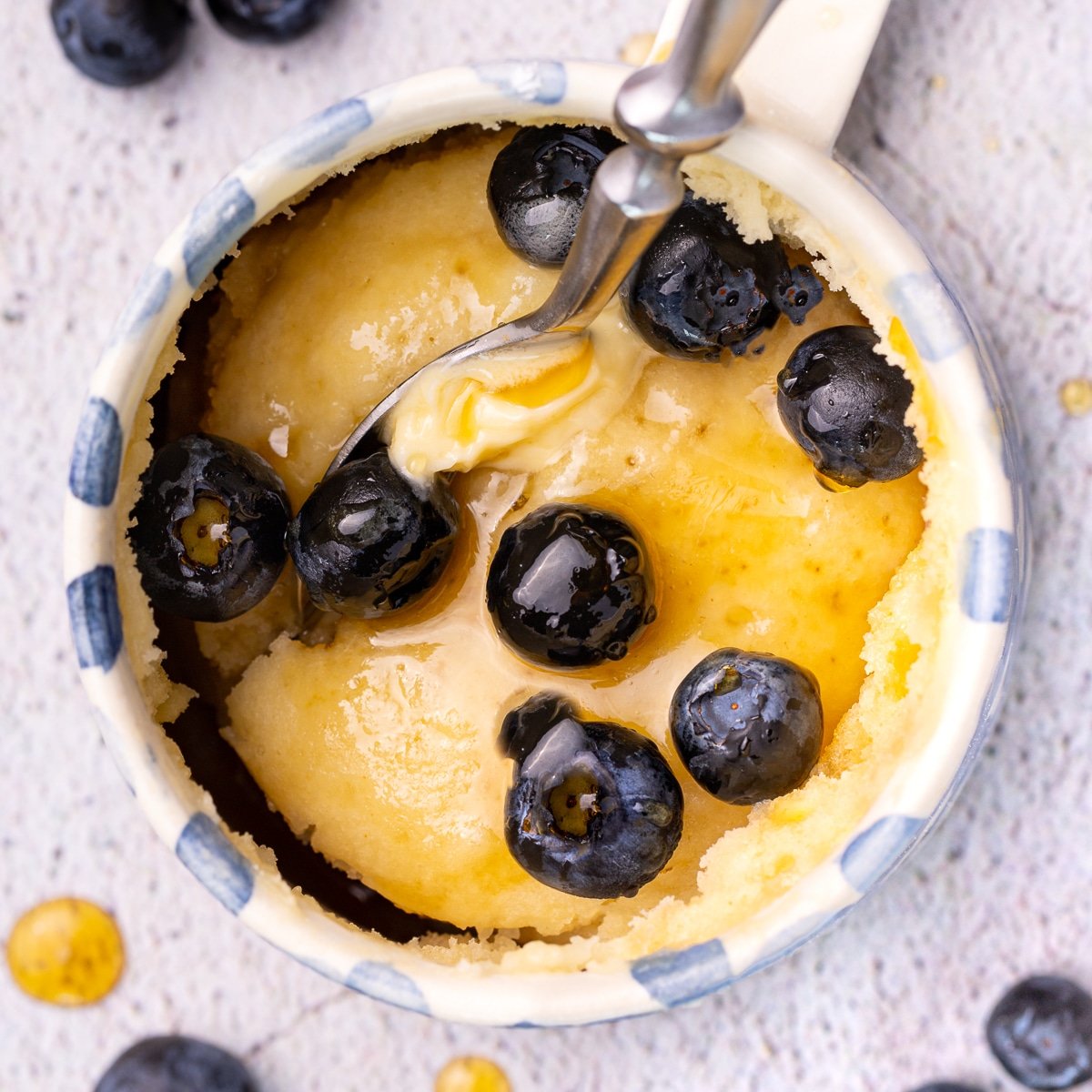
Vegan Banana Pancakes
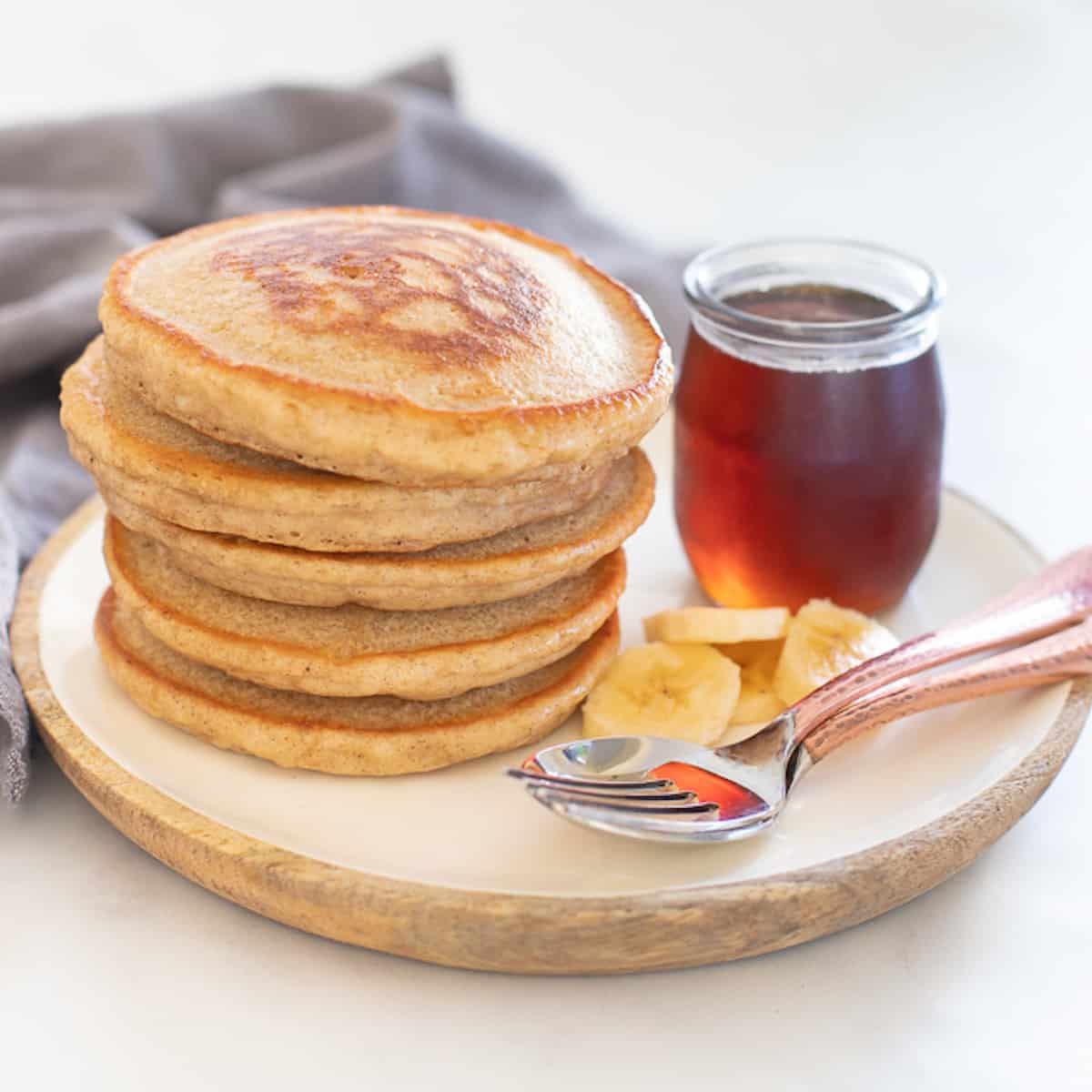
Gingerbread Pancakes
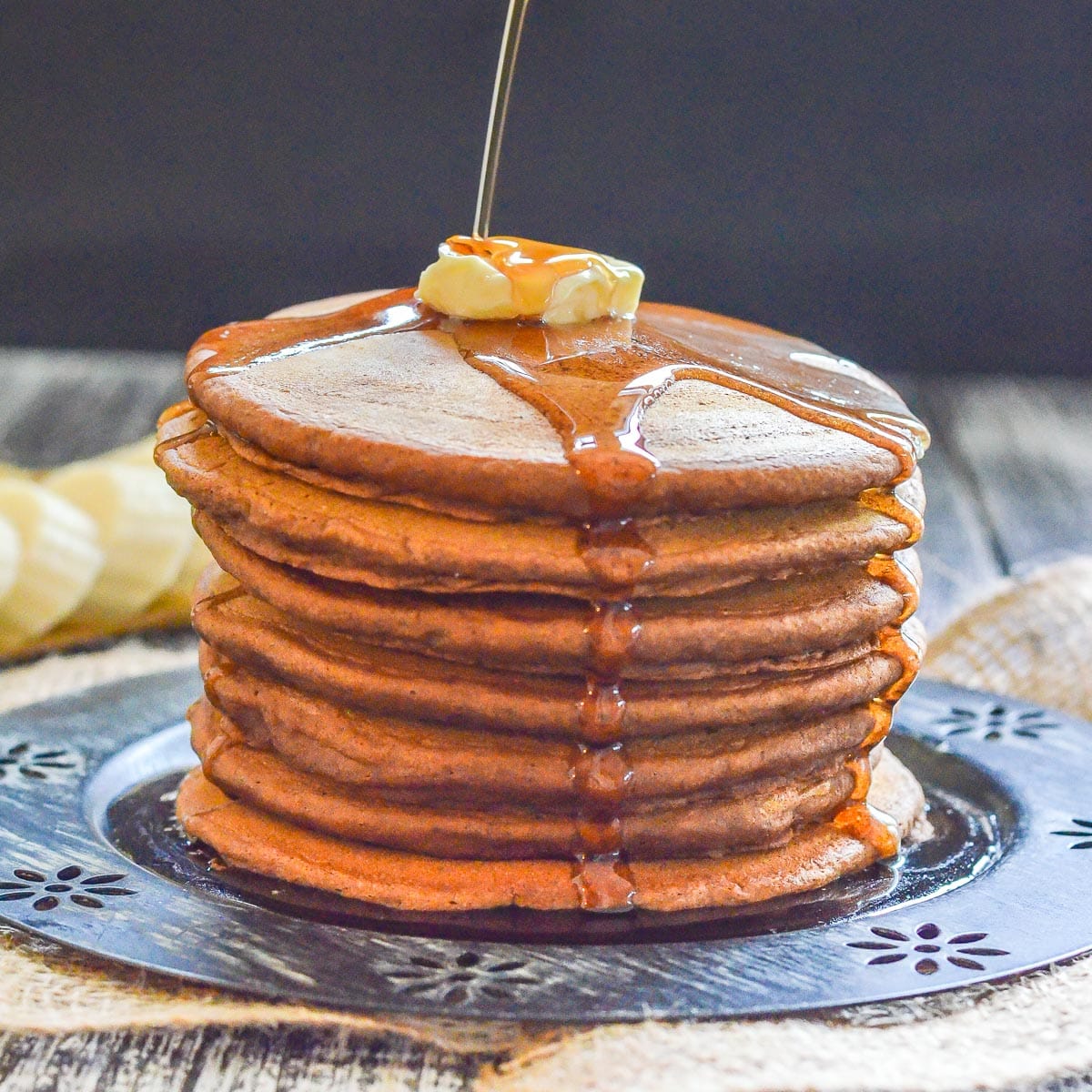
Vegan Banana Oatmeal Pancakes
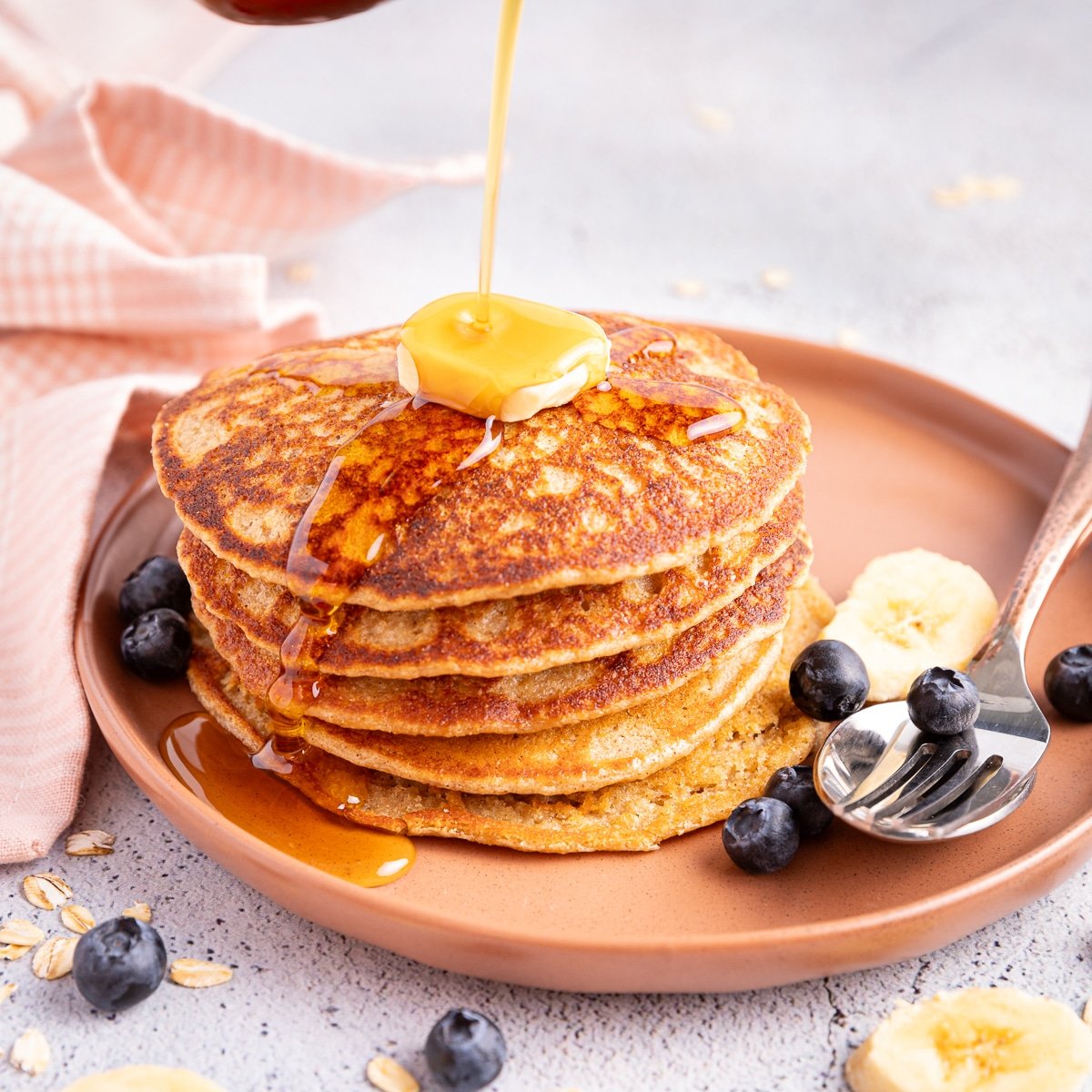
Vegan Sweet Potato Pancakes

Giant Vegan Blueberry Pancake

Vegan English Pancakes
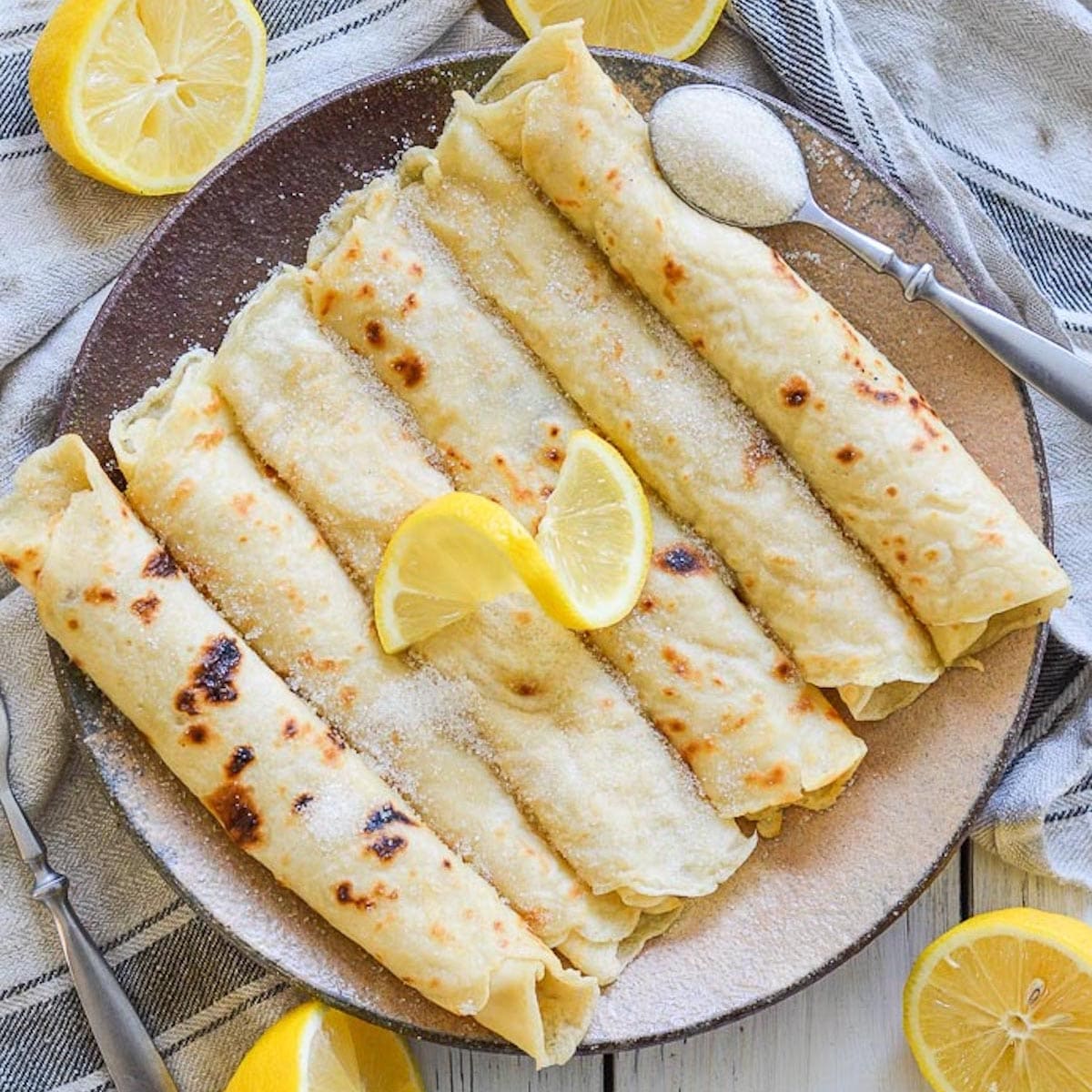
Vegan Pumpkin Pancakes
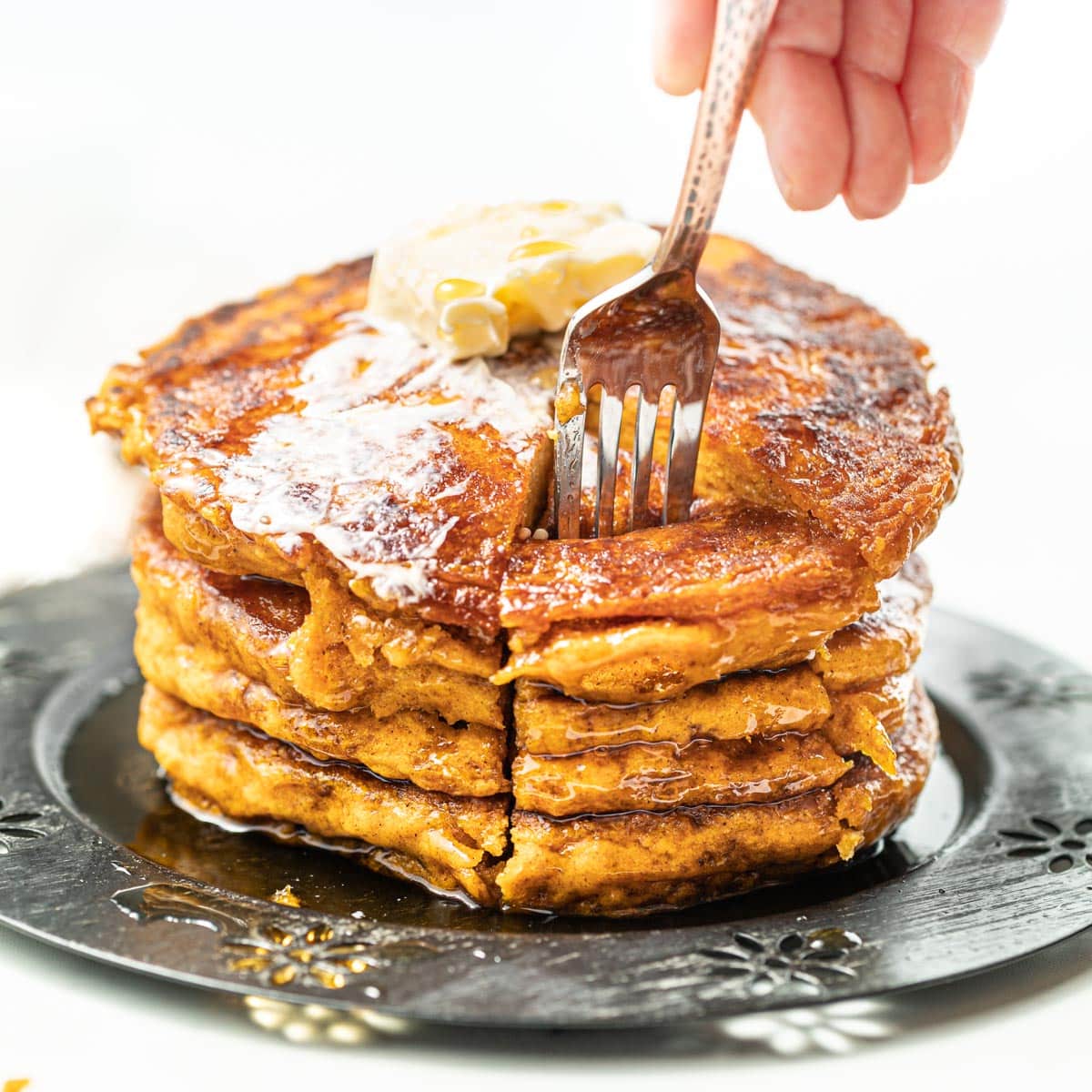
Corn Flour Pancakes

Healthy Oil-Free Vegan Pancakes For One

Got any vegan pancake related questions or tips? Drop them in the comments!

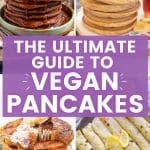
Ronnie says
I made the Vegan English pancakes yesterday using gluten free flour. I wasn't sure whether they would turn out ok so I added 1/4 tsp xanthan gum - they were great. Thanks for the recipe.